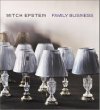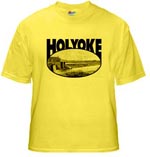by Laurel | June 11th, 2009
June 11, 1899
Holyoke’s Veteran Officer
Patrolman Michael Shine
It is not often a patrolman’s luck to see the kaleidoscopic changes that Michael Shine, Holyoke’s veteran patrolman, has witnessed in the 30 years of life as a police Officer. The six stripes on his sleeve represent time which carries one back to the days when Holyoke was a town. In 1869, when Mr Shine was appointed to the force, there were no board of aldermen, back tax defalcation, litigation, paper combines, street railway lights or anything that to-day makes life bright and cheerful. About ail the fighting Was done in “Tigertown,” as South Holyoke was then dubbed—much against the notion of the late Timothy Merrick, who used to say in town-meeting on occasions that there was such a place as South Holyoke, but no such place as Tigertown. Of the men who were “on th’ bo-o-rd” (as O. D. Allyn would say) of town fathers or selectmen, but one, C. A. Corser is alive to-day. The two others, Allan Higginbotham and William A. Judd, long since passed beyond. On the Police force with Shine were W. G. Ham, subsequently to be chief of police for the new municipality; “Hank” Smith, now of Westfield, and Edward Wiggins, who later was on the state constabulary, and who is now running a stock farm near Boston. There were no uniforms the first year or two on the force. Gin mills flourished on every hand occasioning a great deal of drunkenness, fighting and “breach of the peace” cases which formed the majority of cases before the trial justices of that day. There was no police court, justice being administered by two trial justices, one being W. B. C. Pear sons, later to be Judge Pearsons. The town lockup was located at first near the site of Rev P. J. Harkins’s residence. A mystery hangs over the fate of it. One evening in the early ’70’s as Shine and a fellow officer were coming across Hampden park there was a terrific explosion. The roof was blown off from the lockup and part of the walls were blown down; a boy who was playing near was instantly killed. The cause was never definitely ascertained. A new structure was put up, which is now just by Hobbs’s stable and is used as a tool-house by Park-keeper Sues.
All the Highlands and Elmwood sections were farm lands and Oakdale was a roaring forest, marked by a slaughter-house, about which prowled the woodchuck, the rabbit and other fierce animals. Indeed, when a man named Colby built the house which has been occupied by O. H. Merrick of late years he was laughed at for building a house in the woods. A single- track road with two trains each way a day was the railroad accommodation. The Highlands were known as Ewingsville and the Elmwood section was reckoned a part of Ireland parish. Mr Shine’s first beat was in this same “Tigertown,” and he and another had for their patrol from the extreme end of “Tlgertown” to the Hadley mills. They went on at 7 o’clock in the evening and quit at 4 o’clock in the morning. There were no day officers and the few troubles were quelled probably by constables or special officers. John O. Doran was a mighty man in politics in those days and was looked up to with awe by Tigertown’s young politicians. For quarters there was little wooden building where Fitzgerald, the newsdealer, is now located. Another similar building was located in “Tigertown.”
At first the policemen for some years bad no salary to speak of—something like $6 a month, and $2 for each arrest. This paying so much for an arrest not only had a bad tendency on the part of some subsequently when the force was larger, but also was disagreeable to the patrolmen; for no matter how justifiable the officer in making an arrest, there were always those to say, “Oh, he just earning his $2.” For that reason Mr, Shine rejoiced when the men were put on a salary. The first, chief of police was W. G. Ham, he was acting chief of police when the place was a town and there were but four officers, and was in addition the first regularly appointed chief of police under the first mayor of Holyoke, W. B. C. Pearsons. The police department was located in the city hall when that was built; as a matter of fact, occupying temporary quarters in the basement before the structure was finished and dedicated. Patrolman Michael Shine is far from looking like a veteran. His hair and moustache are curly and sprinkled with grey, and his face is full and round. He is modest about relating his experiences, and has little to say concerning his 30 years of patrolman’s work. He is married and has a family at a pleasant home on Nonotuck street in the Highlands.
Excerpted from the Springfield Republican.








